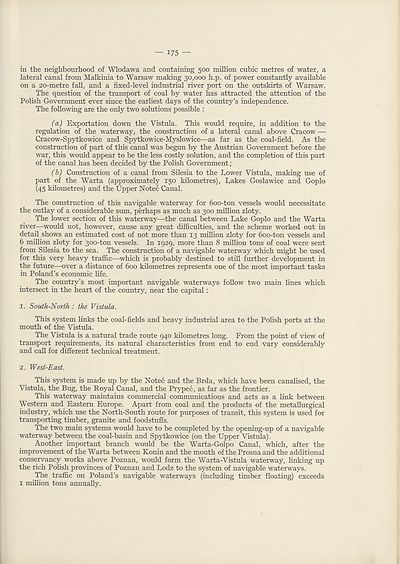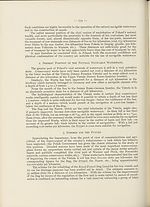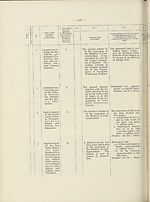Download files
Complete book:
Individual page:
Thumbnail gallery: Grid view | List view

— 175 —
in the neighbourhood of Wlodawa and containing 500 million cubic metres of water, a
lateral canal from Malkinia to Warsaw making 30,000 h.p. of power constantly available
on a 20-metre fall, and a fixed-level industrial river port on the outskirts of Warsaw.
The question of the transport of coal by water has attracted the attention of the
Polish Government ever since the earliest days of the country’s independence.
The following are the only two solutions possible :
(a) Exportation down the Vistula. This would require, in addition to the
regulation of the waterway, the construction of a lateral canal above Cracow —
Cracow-Spytkowice and Spytkowice-Myslowice—as far as the coal-field. As the
construction of part of this canal was begun by the Austrian Government before the
war, this would appear to be the less costly solution, and the completion of this part
of the canal has been decided by the Polish Government;
(b) Construction of a canal from Silesia to the Tower Vistula, making use of
part of the Warta (approximately 150 kilometres). Takes Goslawice and Goplo
(45 kilometres) and the Upper Notec Canal.
The construction of this navigable waterway for 6oo-ton vessels would necessitate
the outlay of a considerable sum, perhaps as much as 300 million zloty.
The lower section of this waterway—the canal between Take Goplo and the Warta
river—would not, however, cause any great difficulties, and the scheme worked out in
detail shows an estimated cost of not more than 13 million zloty for 6oo-ton vessels and
6 million zloty for 300-ton vessels. In 1929, more than 8 million tons of coal were sent
from Silesia to the sea. The construction of a navigable waterway which might be used
for this very heavy traffic—which is probably destined to still further development in
the future—over a distance of 600 kilometres represents one of the most important tasks
in Poland’s economic life.
The country’s most important navigable waterways follow two main lines which
intersect in the heart of the country, near the capital:
1. South-North : the Vistula.
This system links the coal-fields and heavy industrial area to the Polish ports at the
mouth of the Vistula.
The Vistula is a natural trade route 940 kilometres long. From the point of view of
transport requirements, its natural characteristics from end to end vary considerably
and call for different technical treatment.
2. West-East.
This system is made up by the Notec and the Brda, which have been canalised, the
Vistula, the Bug, the Royal Canal, and the Prypee, as far as the frontier.
This waterway maintains commercial communications and acts as a link between
Western and Eastern Europe. Apart from coal and the products of the metallurgical
industry, which use the North-South route for purposes of transit, this system is used for
transporting timber, granite and foodstuffs.
The two main systems would have to be completed by the opening-up of a navigable
waterway between the coal-basin and Spytkowice (on the Upper Vistula).
Another important branch would be the Warta-Golpo Canal, which, after the
improvement of the Warta between Konin and the mouth of the Prosna and the additional
conservancy works above Poznan, would form the Warta-Vistula waterway, linking up
the rich Polish provinces of Poznan and Todz to the system of navigable waterways.
The traffic on Poland’s navigable waterways (including timber floating) exceeds
1 million tons annually.
in the neighbourhood of Wlodawa and containing 500 million cubic metres of water, a
lateral canal from Malkinia to Warsaw making 30,000 h.p. of power constantly available
on a 20-metre fall, and a fixed-level industrial river port on the outskirts of Warsaw.
The question of the transport of coal by water has attracted the attention of the
Polish Government ever since the earliest days of the country’s independence.
The following are the only two solutions possible :
(a) Exportation down the Vistula. This would require, in addition to the
regulation of the waterway, the construction of a lateral canal above Cracow —
Cracow-Spytkowice and Spytkowice-Myslowice—as far as the coal-field. As the
construction of part of this canal was begun by the Austrian Government before the
war, this would appear to be the less costly solution, and the completion of this part
of the canal has been decided by the Polish Government;
(b) Construction of a canal from Silesia to the Tower Vistula, making use of
part of the Warta (approximately 150 kilometres). Takes Goslawice and Goplo
(45 kilometres) and the Upper Notec Canal.
The construction of this navigable waterway for 6oo-ton vessels would necessitate
the outlay of a considerable sum, perhaps as much as 300 million zloty.
The lower section of this waterway—the canal between Take Goplo and the Warta
river—would not, however, cause any great difficulties, and the scheme worked out in
detail shows an estimated cost of not more than 13 million zloty for 6oo-ton vessels and
6 million zloty for 300-ton vessels. In 1929, more than 8 million tons of coal were sent
from Silesia to the sea. The construction of a navigable waterway which might be used
for this very heavy traffic—which is probably destined to still further development in
the future—over a distance of 600 kilometres represents one of the most important tasks
in Poland’s economic life.
The country’s most important navigable waterways follow two main lines which
intersect in the heart of the country, near the capital:
1. South-North : the Vistula.
This system links the coal-fields and heavy industrial area to the Polish ports at the
mouth of the Vistula.
The Vistula is a natural trade route 940 kilometres long. From the point of view of
transport requirements, its natural characteristics from end to end vary considerably
and call for different technical treatment.
2. West-East.
This system is made up by the Notec and the Brda, which have been canalised, the
Vistula, the Bug, the Royal Canal, and the Prypee, as far as the frontier.
This waterway maintains commercial communications and acts as a link between
Western and Eastern Europe. Apart from coal and the products of the metallurgical
industry, which use the North-South route for purposes of transit, this system is used for
transporting timber, granite and foodstuffs.
The two main systems would have to be completed by the opening-up of a navigable
waterway between the coal-basin and Spytkowice (on the Upper Vistula).
Another important branch would be the Warta-Golpo Canal, which, after the
improvement of the Warta between Konin and the mouth of the Prosna and the additional
conservancy works above Poznan, would form the Warta-Vistula waterway, linking up
the rich Polish provinces of Poznan and Todz to the system of navigable waterways.
The traffic on Poland’s navigable waterways (including timber floating) exceeds
1 million tons annually.
Set display mode to:
![]() Universal Viewer |
Universal Viewer | ![]() Mirador |
Large image | Transcription
Mirador |
Large image | Transcription
Images and transcriptions on this page, including medium image downloads, may be used under the Creative Commons Attribution 4.0 International Licence unless otherwise stated. ![]()
| League of Nations > Communications and transit > Enquiry on national public works > (177) |
|---|
| Permanent URL | https://digital.nls.uk/195000651 |
|---|
| Shelfmark | LN.VIII |
|---|
| Description | Over 1,200 documents from the non-political organs of the League of Nations that dealt with health, disarmament, economic and financial matters for the duration of the League (1919-1945). Also online are statistical bulletins, essential facts, and an overview of the League by the first Secretary General, Sir Eric Drummond. These items are part of the Official Publications collection at the National Library of Scotland. |
|---|---|
| Additional NLS resources: |
|

